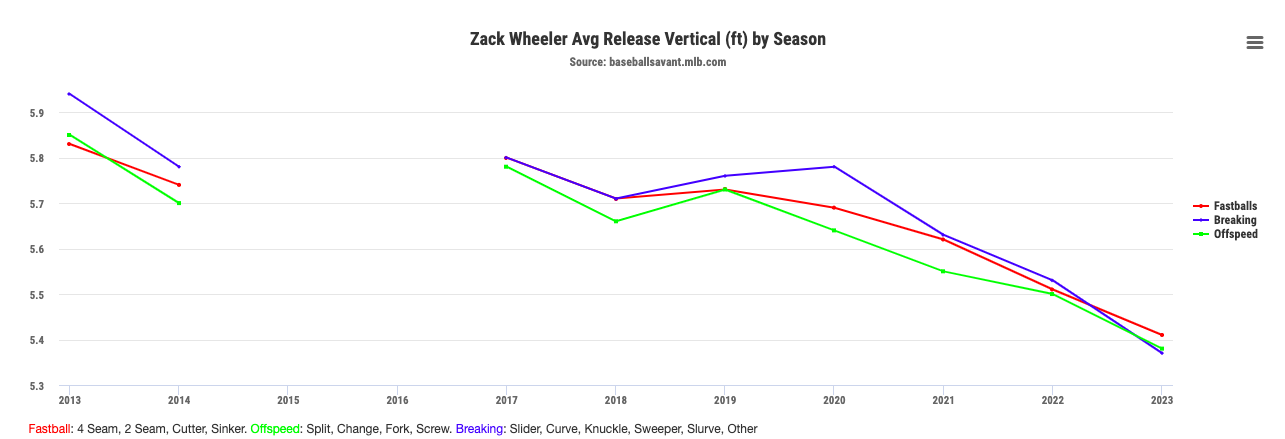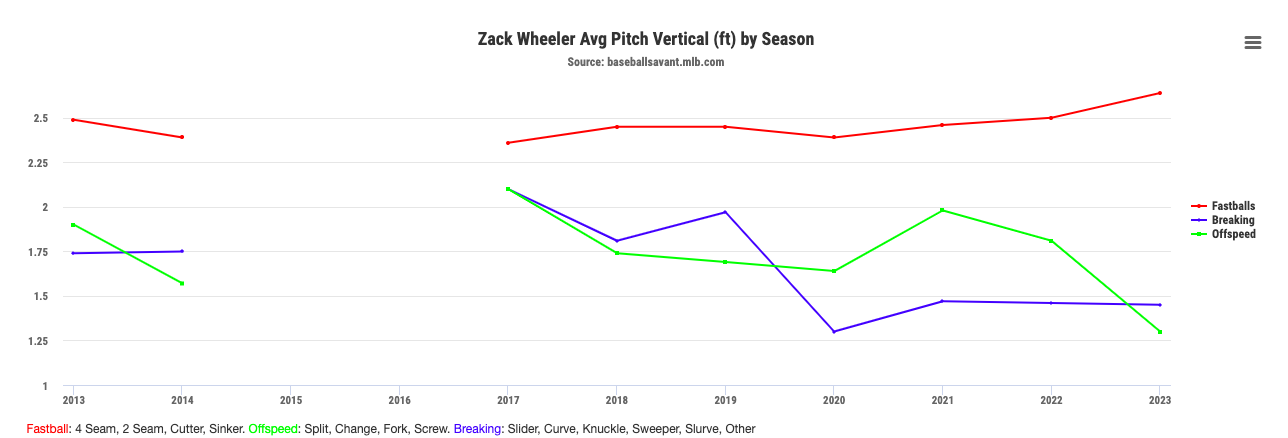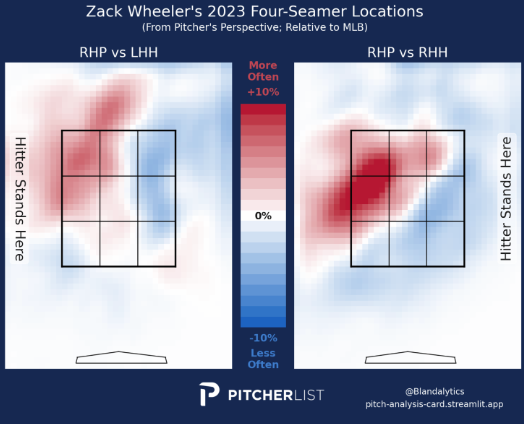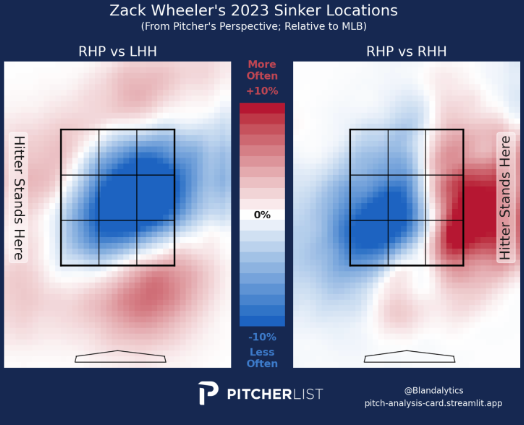The point of pitching is to prevent the opposing team from scoring runs. Some pitchers do this well (see: Snell, Blake; Cole, Gerrit) while others, not so much (see: We’re not going to call anyone out here but you, dear reader, immediately pictured someone in your mind’s eye, didn’t you). All pitchers lie somewhere along the Good-Bad spectrum, though a few find themselves among a special band known scientifically as the Zone of Underappreciation.
Underappreciated pitchers are, by definition, unequivocally good but something about their circumstances prevents the royal us from fully grasping how good they truly are. For some, it’s because their team is bad or market is small. For others, it’s the absence of a flashy trait or personality. For Zack Wheeler…well I’m not entirely sure what it is!
Now, I can already hear you saying, “Zack Wheeler?! The Zack Wheeler?! Everyone knows he’s good! He signed a $118 million contract and starred on a World Series team!” I hear you. But consider this: Despite ranking 10th among active pitchers in career fWAR (31.8) since his debut in 2013, the 33-year-old has made only a single All-Star team and has finished in the top five of Cy Young voting only once (both occurred in 2021). Additionally, Wheeler is the only pitcher to rank in the top five in PLV for each of the past three seasons. Wheeler is simultaneously a bona fide ace and among the most underappreciated hurlers in the game, especially since joining the Philadelphia Phillies before the 2020 season.
Wheeler boasts a career 3.45 ERA and 3.34 FIP to go with a 17.1% strikeout-minus-walk rate, strong but not overwhelmingly so; however, when considering only the last three seasons (we can all agree that 2020 never happened), these numbers improve to 3.07, 2.88, and 22.3%, respectively. There’s a real argument in favor of Wheeler being the best pitcher with the consistently best stuff in MLB since joining the Phillies and he largely has his fastball variations to thank.
(*Quick note: Generally, Pitcher List considers cutters to be a breaking ball based on variables such as velocity, spin, and deployment; however, MLB considers them to be fastballs. So when looking at the Baseball Savant graphs embedded in this article, understand that cutters are included in the data.)
Wheeler has always leaned heavily on his four-seamer and sinker, even dating back to his good-but-not-great, frequently injured days with the New York Mets; his pitch mix has never featured less than 75% fastball usage in a given season, per Baseball Savant. However, the mix and shape of his fastballs have changed dramatically since arriving in Philly, and that has fueled his metamorphosis.
Rightfully recognizing his elite extension (consistently over seven feet) and spin rates, the Phillies have worked with Wheeler to drop his arm slot—appreciated by average vertical release height in the image below—and live higher up in the zone. Although the induced vertical break (14.1-15.0 in.) of his four-seamer—his most frequently deployed pitch—is consistently below average, his adjusted vertical approach angle (1.4 degrees) is elite. He leverages these variables by pounding the top of the zone against hitters on both sides of the plate, primarily up-and-away to righties and up-and-in to lefties.



His sinker, on the other hand, is utilized solely to neutralize righties; a mere 5.6% of his sinkers during his time with the Phillies have been thrown against left-handed hitters compared to 43.3% with the Mets, a whopping 673% decrease in usage. Wheeler’s mechanics are quite repeatable, something he has focused on intently since returning from Tommy John surgery in 2017, making his four-seamer and sinker appear indistinguishable out of the hand. Both offerings approach the plate at relatively the same AVAA (1.4 degrees vs. 1.0 degree) and velocity (95.8 mph vs. 95.2 mph); however, rather than emphasizing being located up, Wheeler’s sinkers are only thrown in, and often off the plate (48.1% xZone% in 2023).

The result is a pitch combination that is difficult to recognize and, thus, square up. Wheeler’s four-seamer boasted a .259 xwOBA and .335 xSLG while his sinker earned a ridiculous .271 xwOBA and .292 xSLG in 2023, respectively.
Thanks to the adjustments Philadelphia and Wheeler have implemented, Wheeler’s four-seamer and sinker have combined to produce a Run Value of +66 between 2021-2023 compared to only +28 from 2017-2019 while with the Mets. The changes also opened the door for Wheeler to fully embrace the sweeper that he debuted last summer and implemented to cruise past the Miami Marlins in the Wild Card round.
“So [the sweeper] plays in the thigh line away from the righty,” Phillies pitching coach Caleb Cotham told reporters following the win. “[Opposing batters] have to solve the two-seamer in. When [Wheeler] has a good two-seam in, he has a lot of room to throw the sweeper up in the zone.”
Wheeler’s sweeper was elite for the pitcher last summer, producing a .202/.258/.373 expected slash-line. Much like his overall dominance, it was largely due to the success of MLB’s best pair of fastballs.
